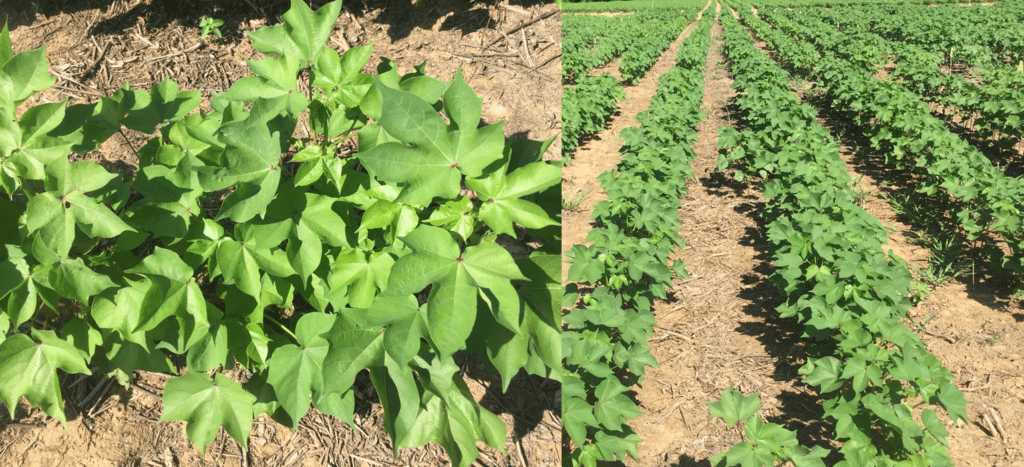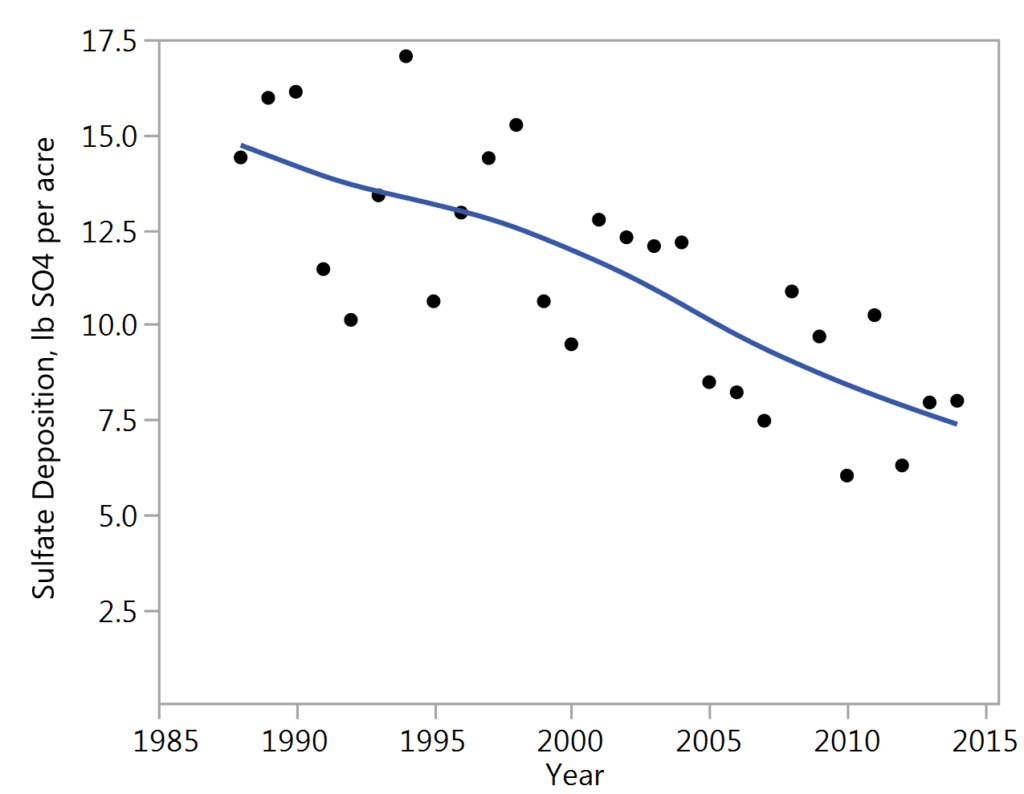Tyson Raper and Frank Yin
ARTICLE OVERVIEW
- Sulfur deficiencies are starting to show up this year in TN cotton.
- Deficiencies appear as uniform chlorosis of new growth, slight stunting
- Soil applied applications of ammonium sulfate can still remedy the deficiency
- Late season deficiencies can be addressed with (2) applications of magnesium sulfate (Epsom salt)
- UT currently recommends 10 lb S per ac for cotton

Sulfur (S) deficiencies are beginning to appear in some West TN cotton fields. The image above was taken last week at Ames Plantation in a trial conducted by Dr. Frank Yin. Although the soils at that location (Collins fine sandy loam) are coarser than our typical silt loam, I was surprised to see such a strong response to the nutrient by third week of square, mainly because our hot June should have supported rather rapid organic matter breakdown and a release of S. This response is a testament to the significant reduction in S deposition occurring across the Mid-South and Southeast and the substantial nutrient demands of our current high-yielding cultivars.

As most know, S deficiencies have been becoming more common in cotton fields in recent years. This is in part due to a reduction in sulfur emissions from manufacturing plants and diesel fuels and lack of S in many other pesticides and fertilizers. Lint yield reductions between 8 and 10% have been noted in field trials in West TN. Nitrogen (N) and S deficiencies are commonly confused- particularly late in the season. Although both cause chlorosis of leaf tissue, the mobile nature of N within the plant results in deficiency symptoms first appearing low in the canopy. In contrast, S is very immobile in the plant and, as a result, S deficiency symptoms first appear in new growth near the top of the plant as uniform chlorosis, or yellowing of tissues.
The University of Tennessee currently recommends 10 lb S on fields where deficiencies are suspected or soils are fairly coarse. Most applications will be made with ammonium sulfate prior to square, but keep in mind sulfate moves much like nitrate in soils and can be lost through leaching or runoff. Soil applied applications of ammonium sulfate at this stage (early flower) may still ameliorate the deficiency given a rainfall or irrigation event moves the fertilizer into the soil solution, but our window for soil applied applications will be closing soon. Deficiencies noted at late flower can be partially addressed with two foliar applications of epsom salt (magnesium sulfate) applied at 4 lb S per acre.
If you have more questions on S and deficiencies in cotton, check out the Plant Management Network presentation by Dr. Syam K. Dodla entitled, ‘Sulfur Fertilization of Cotton’. This presentation covers soil analysis for S deficiencies, outlines how to identify S deficiency symptoms in plants, covers the effects of S on cotton yields, and highlights potential sources of fertilizer S. Also, we have a full length publication to be released soon which takes an in depth look at changes in S deposition and responses of TN row crops to applications of the nutrient.


Kudos to you! I hadn’t thgouht of that!